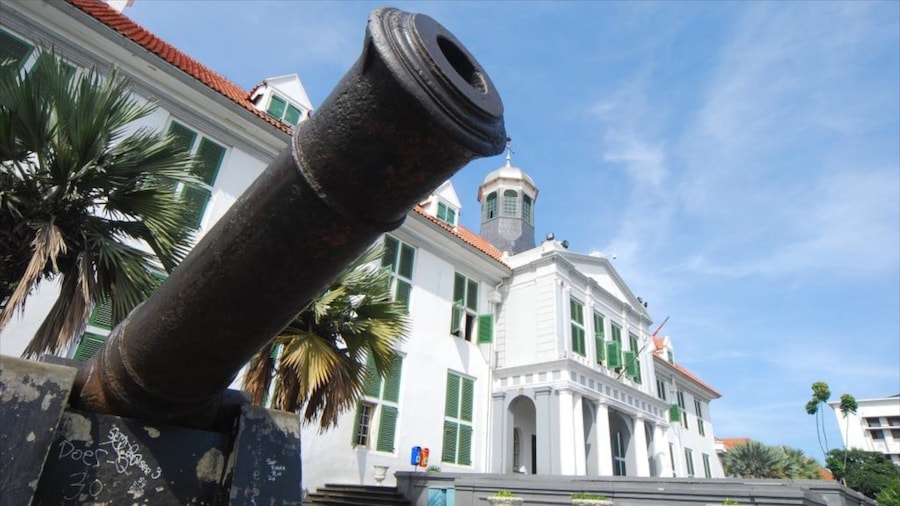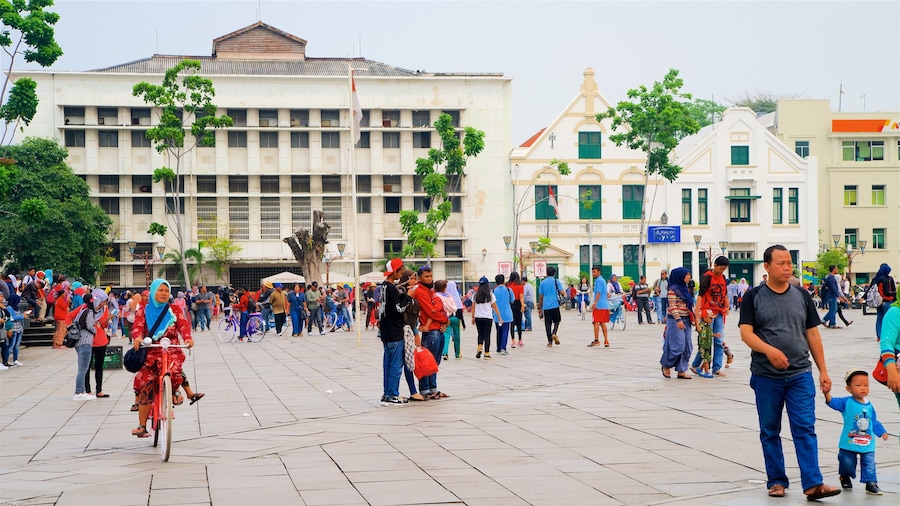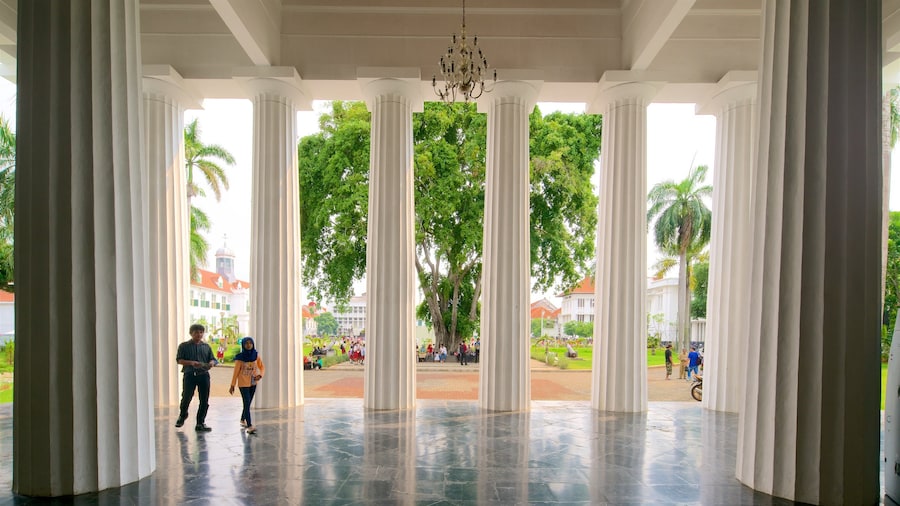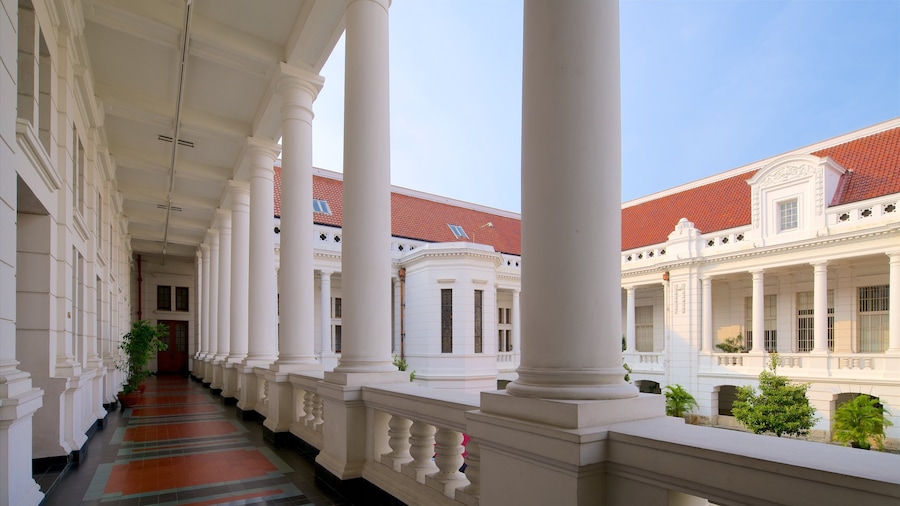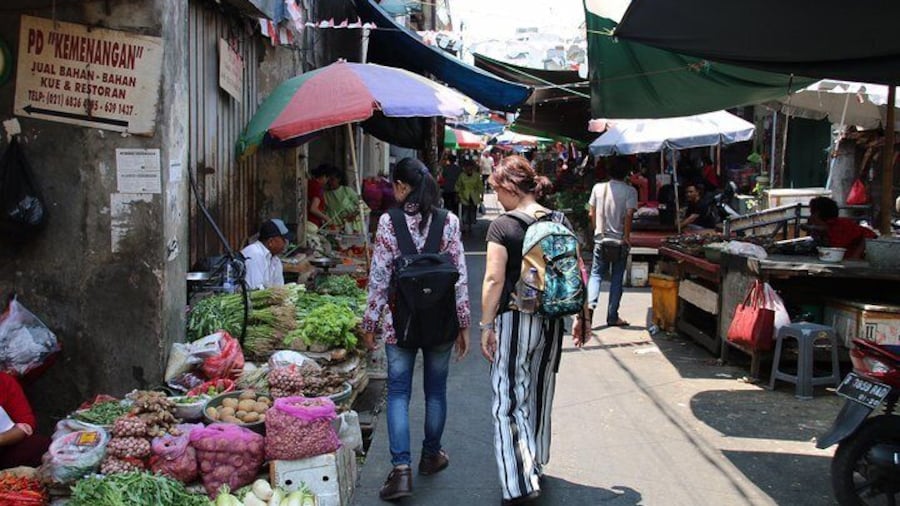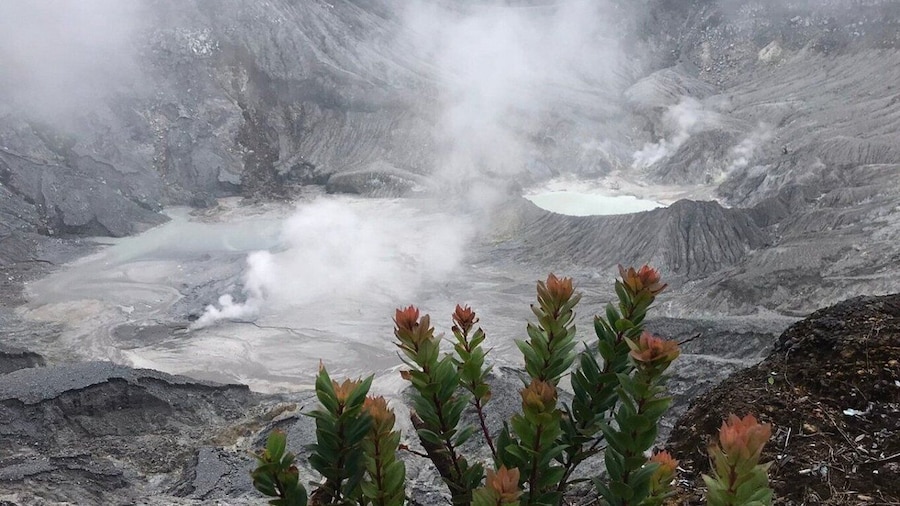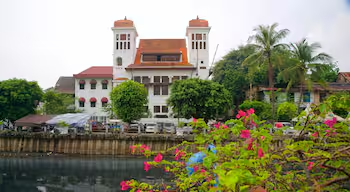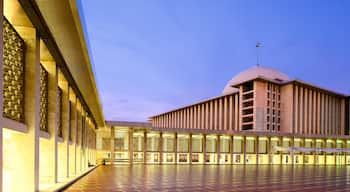While wandering the atmospheric streets of the city’s historic centre visit eclectic museums and uncover the colonial origins of Jakarta.
Old Jakarta (Kota) is where Jakarta’s Dutch colonial years began in the 1600s. Formerly known as Batavia, this neighbourhood features Dutch- and Chinese-influenced architecture, markets, museums and lively squares. The Dutch East India Company established Old Jakarta in 1619. It grew into one of the most resplendent Dutch colonial towns. Today, visit the area to glimpse life in Jakarta prior to the onset of modern skyscrapers.
The neighbourhood’s heart is Fatahillah Square, a paved plaza framed by grandiose colonial palaces. This was once the administrative centre of Batavia. From here the Dutch East India Company controlled much of its trading activity. Enjoy a relaxed drink or hearty lunch in Café Batavia in an exquisite 19th-century building. Its art deco and teakwood furnishings recreate the ambiance of Dutch colonial years.
Explore the museums surrounding Fatahillah Square. Housed in the former town hall is the Jakarta History Museum, which covers everything from prehistoric to colonial and independence history. Learn about the art of Javanese puppetry at the Wayang Museum. Browse superb exhibits at the Museum of Fine Arts and Ceramics.
Follow the square’s adjoining tree-lined streets, many home to handicraft stalls and colourful food carts. Sample local snacks such as siomay bandung (fish dumplings and peanut sauce) and gado-gado (vegetable salad with peanut sauce). About a 10-minute walk north of the square is Kota Intan Bridge. Built in the 17th century, it is one of Indonesia’s last surviving Dutch-built wooden drawbridges.
South of the main square is the Museum Bank Indonesia. Find interactive exhibits that retrace Indonesia’s financial and trading past. Nearby is the impressive Jakarta Kota Station. Continue south to Jakarta Chinatown, a lively district of confectionary stores, electronics retailers, teahouses, temples and restaurants.
Reach Old Jakarta easily via public buses, trains and taxis. Consider renting a bike at Fatahillah Square and cycling to the city’s old port, Sunda Kelapa. Admire the array of brightly painted fishing boats and see a slice of seafaring history at the Museum Bahari Maritime Museum.





